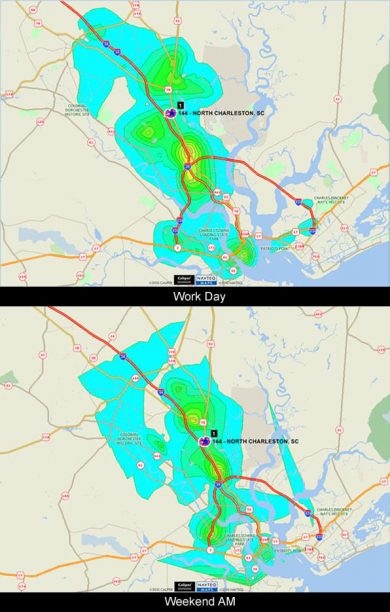
Redlands, California—Esri announces that it is teaming up with strategic partner eSite to bring unique trip and traffic flow insights to the ArcGIS platform. The insights are derived from eSite tools using origin and destination data from TomTom, the leading provider of navigation and location-based data, and will be delivered through Esri’s ArcGIS Online. Retailers, merchandisers, restaurants, banks, and others, will be able to define real-world trade areas and market potential for their stores, restaurants, clinics, branches, and facilities. To see this exciting new location analytics tool, visit Esri booth #933 during RECon.
The trip data exposes the origin and destination for any consumer trip to or from a trade area. When combined with Esri Location Analytics, these new eSite tools will allow retailers to move beyond inferred trade area demographics to do the following:
- Filter data by parts of the day, a full day, or week
- Better understand where their potential customers come from and where they go
- See how potential customers interact with their stores as well as their competitors’ stores
Now, instead of relying on typical residence-based trade area reporting, end-to-end market modeling and forecasting will be based on fact, not intuition.
“We are pleased to work with Esri and TomTom to provide access to this data for location-based customers,” said Tom Blazer, CEO of eSite. “TomTom is the world’s leading supplier of location and navigation products, and Esri is the only vendor that provides a complete platform that allows us to deliver our data solution to desktop, mobile, server, and cloud users.”
“TomTom is always excited to see our products used in new and innovative ways,” said Dan Adams, vice president of Location and Live Services, TomTom. “This collaboration extends the use of our origin and destination information to a new audience, providing them with trade area information never before available.”
“This is a breakthrough in retail analysis,” said Simon Thompson, Esri’s commercial industry director. “Most location-based businesses have very little customer data. With this data, retailers have real trips to their store’s trade area from real shoppers. Retailers can easily see who core shoppers are, find more like them living both inside and outside their trade area, and understand what drives them.”
